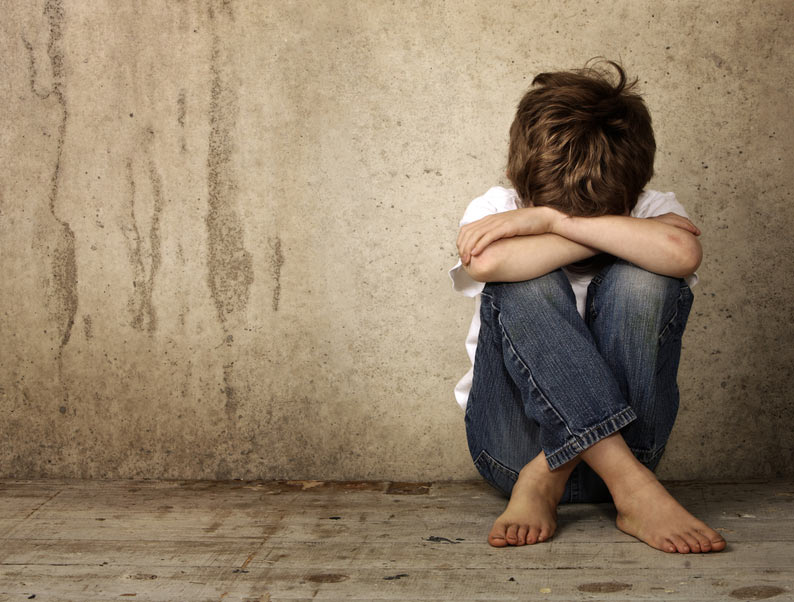Childhood Mistreatment Primes Brain for Mental Illness

Changes in the brain linked to childhood abuse and maltreatment may prime a child for future mental health problems, new research finds.
The study, which compared the brains of teenagers who had been abused as children with those of very similar teens who had not experienced any mistreatment, is one of the first to follow individuals before they are diagnosed with a mental illness. That strengthens the case for a causal link between the damage and the disease, the researchers said.
"Maltreatment makes the subjects vulnerable to major depressive disorder and substance disorder," study researcher Hao Huang, a scientist at the University of Texas Southwestern Medical Center, told LiveScience. "And the damage can be seen even before they develop any disorder." [Top 10 Controversial Psychiatric Disorders]
The abused brain
Numerous studies have linked childhood abuse to long-lasting changes in the brain. In February, researchers reported in the journal Proceedings of the National Academy of Sciences that abused, neglected and maltreated kids have smaller hippocampuses than kids who aren't abused. The hippocampus is involved in memory formation and can shrink as a result of exposure to stress hormones, the researchers told LiveScience.
A more recent study, involving children raised in Romanian orphanages, even found that simple neglect — particularly the lack of a warm and responsive caregiver to bond with — causes permanent changes in the gray matter and white matter of the brain.
Gray matter is made up of the nerve cell bodies in the brain, while white matter is made of the fat-sheathed projections of these cells, bundled together like telephone wire. White matter makes it possible for brain regions to communicate with one another.
Sign up for the Live Science daily newsletter now
Get the world’s most fascinating discoveries delivered straight to your inbox.
Huang and his colleagues focused their research on the white matter of teenagers' brains. They screened these teens carefully to make sure they were free of medical and psychiatric problems. Nineteen victims of abuse were included, along with 13 teens who were similar to the first group except for never having experienced abuse.
Abuse (also called maltreatment) included physical and sexual abuse, as well as at least six months of witnessing domestic violence in the home.
White matter damage
The researchers used an advanced technique of magnetic resonance imaging called diffusion tensor imaging (DTI) to scan the participants' brains. DTI uses the natural motion of water molecules in the brain to trace white matter tracts, essentially mapping the brain's wiring.
These maps revealed that teens who had experienced abuse had more microscopic damage to their white matter than teens who'd never been abused. [10 Facts About the Teen Brain]
"Just due to maltreatment, the brain can already have this big physical damage to white matter tracts," Huang said.
For the next five years, the researchers followed up with the teenagers every six months. The teens were evaluated on each visit for psychiatric problems. Over the five years, six of them developed depression and five developed substance abuse problems. Five of the depressed participants and one of the substance abusers were from the abused group of kids. The mental health problems also matched up with the brain damage findings.
"Those who had the disrupted tracts were more likely to develop either depression or an addictive disorder," study researcher Uma Rao of Meharry Medical College in Nashville, Tenn., told LiveScience.
Identifying the risk
Rao and Huang warned that the study was small and more subjects are needed to confirm the findings. The results do fit with previous research, however. Animal studies have found that exposure to stress during brain development can cause changes in brain structure, in part because of disrupted hormone levels. The evidence in humans is accumulating as well.
"Just verbal abuse by parents — no hitting, no beating up, no sexual abuse, but just calling a child mean names or talking down to them — if this persists, some of these brain changes have been seen," Rao said, citing a 2009 Harvard University study.
If the findings hold, they could be used to identify kids who are at risk for developing mental illnesses down the road, the researchers said. The results appear today (Aug. 1) in the journal Neuropsychopharmacology.
"That's what our studies are focused in on," Rao said. "Really trying to identify those who are most at risk."
Follow Stephanie Pappas on Twitter @sipappas or LiveScience @livescience. We're also on Facebook & Google+.

Stephanie Pappas is a contributing writer for Live Science, covering topics ranging from geoscience to archaeology to the human brain and behavior. She was previously a senior writer for Live Science but is now a freelancer based in Denver, Colorado, and regularly contributes to Scientific American and The Monitor, the monthly magazine of the American Psychological Association. Stephanie received a bachelor's degree in psychology from the University of South Carolina and a graduate certificate in science communication from the University of California, Santa Cruz.









